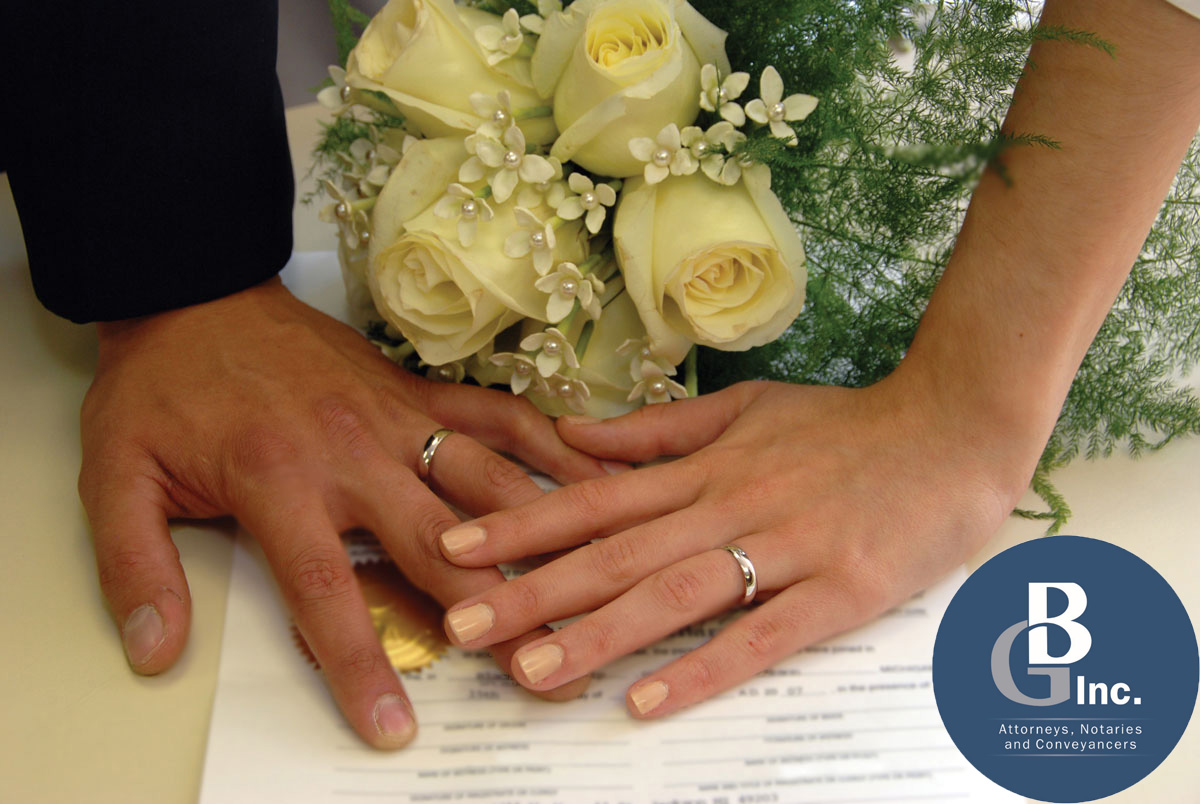MARRIAGE IN COMMUNITY OF PROPERTY
A look at Matrimonial Property Regimes
South African law consists of three types of marital regimes. The 3 are as follows:
- Marriage in community of property;
- Marriage out of community of property with the inclusion of the accrual system; and
- Marriage out of community of property with the exclusion of the accrual system.
Critically, the parties to any potential marriage must understand what the consequences are of each marital regime. Too often couples are married without a full understanding of the marital regimes, and only when considering divorce are the full consequences made clear.
For the purposes of this article I shall focus on marriage in community of property.
Marriage in community is the default regime. Where no Antenuptial contract is concluded prior to the marriage of the parties, the marriage will then be deemed to be in community of property, also known as community of profit and loss. When couples are married in community of property, their estates are essentially joined. Every asset and liability they acquired before, and will acquire during the subsistence of the marriage, will be shared and essentially the parties will have one shared estate, commonly referred to as the joint estate. The joint estate simply represents the accumulation of all the assets and liabilities of the married spouses. They own equal undivided shares of the net asset value of such estate, which is determined by comparing the assets in the estate to the debts incurred by the spouses. Upon dissolution of the marriage the estate will be divided equally between the parties, and they will share the profit and losses.
However, not all assets are automatically included in the joint estate, three (3) classes of assets are excluded, these are:
- All assets bequeathed to a spouse, as well as any assets acquired by the spouse as a result of the spouse’s possession of such bequeathed assets;
- Damages awarded to one spouse for non-patrimonial damages, for examples damages awarded by a court for things like slander and defamation; and
- Donations made between spouses.
The above assets are all excluded from the joint estate, should the parties divorce at a later stage, these assets cannot be considered for the purposes of division. Equally, if not more important, are the implications relating to creditors and the liability of parties married in terms of this matrimonial regime. When parties are married in community of property the joint estate becomes liable for their debts. This means that the parties are equally and indivisibly liable to each other’s creditors. When one spouse cannot pay for whatever reason, the creditor can recover the full amount from the other spouse, whether in cash or by the attachment and sale of assets to raise sufficient funds to pay the debt. At this point it becomes important to emphasise that the exclusion set out above will not apply. Although those classes of assets are excluded from the joint estate such provision only applies between the spouses and not to third parties. Should either party be overly indebted, all the assets of both parties can be attached by creditors.

